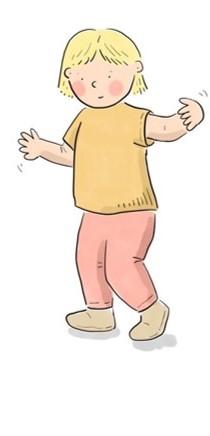What are Flat Feet?
Most adult feet have an arch along the inside edge of the foot. Flat foot is when the arch is apparently absent or reduced in standing. The arches may ‘appear’ when your child is sitting, when the big toe is bent backwards or if your child stands on tip toe.
Ordinarily before the age of 3 all children have flat feet, as the arch on the inside of the foot does not begin to develop until after this age.
Even in older children flat feet do not usually cause any problems.

What causes flat feet?
The many bones in the foot are held together by stretchy bands called ligaments.
Flat feet are usually due to loose or soft ligaments and baby fat between the bones of the foot.
This causes the arch to fall when your child stands up which is why flat feet are sometimes called 'fallen arches'
There are different terms that are used to describe flat feet but essentially they all mean the same thing.
- Pes planus
- Pes valgus
- Pronated feet
- Fallen arches
The typical flat foot is flexible and most children have no symptoms
Will my child need treatment?
If your child does not have any associated problems with their flat feet treatment is unlikely to be indicated. Many people have a long standing belief that flat feet are abnormal and require treatment with special shoes, insoles or even splints or braces.
We know that the majority of children between 1-6 years of age have flat feet. This is part of normal development of their feet and over 95% of children grow out of their flat feet and develop a normal arch. The other 5% continue to have flat feet, but only a small number will ever have a problem. Most children with a persistent flat foot participate in physical activities, including competitive sports, and experience no pain or other symptoms. It is less important how your foot looks as to how it functions. Most children with painless flexible flat feet do not need any treatment.
However, if your child complains of foot, ankle or knee pain, or has poor balance, or poor stamina in walking, then a referral to see a physiotherapist may be appropriate. They can then assess the problem and treat as needed.
What kind of treatment is there?
Treatment for a more severe or painful flat foot can consist of exercise prescribed by your physiotherapist for your child to do. It may also include your physiotherapist referring your child to an orthotist or podiatrist who specialises in providing corrective devices such as arch supports or orthotics (insoles) to put in your child’s shoes. Insoles will not change the shape of the foot and are therefore not a ‘cure’; they simply hold the foot in a better position so that it can work more effectively and may help reduce some of the symptoms.
Should my child be physically active?
Physical activity is important for all children's development. If your child does not have symptoms, you do not need to restrict your child’s activities. Supportive footwear is always recommended for your child’s feet. See “Choosing Footwear for Children” for further information.
